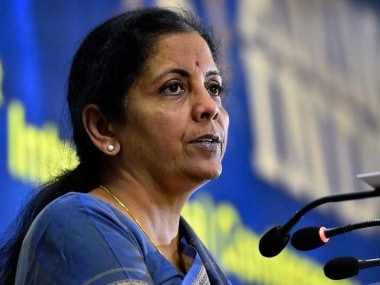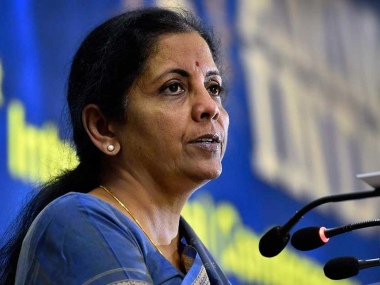It was in August when Union Finance Minister Nirmala Sitharaman began announcing back-to-back measures to address the economic slowdown. The government, till then, had refused to acknowledge the worsening economic situation and kept playing down the issue. This, however, changed after high-frequency economic indicators started flashing the warning signals and international agencies followed up with caution. Sitharaman’s measures started with the mega bank merger plan . In one shot, the government decided to merge ten public sector banks (PSBs) into four to gain size. This took the total number of PSBs to 12 from 27 banks in 2017. Besides these mergers, the FM also announced governance reforms for PSU banks. Post-the bank merger announcement came a series of other announcements in the month of September. Some of the measures announced this time—withdrawal of enhanced surcharge on foreign portfolio investors (FPIs) and domestic investors restoring the pre-Budget position, quashing angel tax for DPIIT registered start-ups—were reversals of Budget decisions. The decision to ease income tax filing and the Goods and Services Tax (GST) compliance process steps were indeed in the right direction. So were quicker GST refunds to MSMEs and the promise of accelerating dues to private sector entities. The Rs 70,000 crore capital infusion promise for PSU banks was originally announced in Budget 2019. This did not excite the sector much, because out of the Rs 70,000 crore, the actual growth capital for banks will only be around Rs 30,000 crore as per various analyst estimates. This is because banks have a heavy provisioning burden on bad loans and required heavy capital to meet the regulatory norms for minimum reserve. [caption id=“attachment_7363111” align=“alignleft” width=“380”]  File image of finance minister Nirmala Sitharaman. PTI[/caption] Sitharaman also announced that flaws in meeting corporate social responsibility (CSR) norms will be a civil matter and not a criminal matter. This, again, was a reversal of a totally unwarranted decision taken earlier by the government. Besides these, Sitharaman announced packages for the housing sector and assistance for stalled projects that are performing. Targeting the crisis-ridden auto sector, Sitharaman said the government is willing to defer higher registration fee till next year. Also, decisions to allow BS-IV cars to be purchased till March 2020 and asking the government department to replace old vehicles were seen as positive moves to the economy. But, despite a series of measures announced by the FM, the economy is still struggling to get back on a steady path. Why? The answer is that none of these measures probably directly address the core problem the economy is facing at this juncture—a collapse of consumer demand . This fact has been reiterated by international Moody’s yet again. The agency has cut the growth target for the economy in the current financial year further to 5.6 percent after cutting it to from 6.2 percent to 5.8 percent early this year. The agency, which also lowered the growth outlook to ‘negative’ from ‘stable’ earlier, said government measures aren’t adequate to address the widespread weakness in consumption demand. Recently, an SBI research report too suggested that the GDP will fall to 4.2 percent in the second quarter and 5 percent for full year. Consumption conundrum Moody’s isn’t the first to identify the consumption conundrum that has dragged the growth across industries. In October, a Reserve Bank of India (RBI) survey had warned that consumer confidence fell to a six-year low in September on account of weak sentiments around employment, income and discretionary spending. In September, the IIP contracted for the second straight month to 4.3 percent. One of the major segments that witnessed a decline was consumer durables that contracted by 9.9 percent during the month.
Only if households get incentives to spend more and start doing that, things will change in the economy. Consumer spending, if it picks up, can lead to better sales for small and big companies and lead to higher tax collection. People have significantly cut down spending on cars, restaurants, clothing and so on, creating a sluggish environment. Both the government and the RBI need to have a coordinated plan to address the problem of consumer demand, especially in the rural economy. This is the part of the larger economy that took a major hit during the note ban in 2016.
As the National Sample Survey (NSS) data points out, average consumption expenditure at current prices fell from Rs 1,587 per person per month (ppm) in 2014 to Rs1,524 ppm in 2017-18 in rural areas while in urban areas it fell from Rs 2926 ppm in 2014 to Rs 2909 ppm in 2018. The government has to address the demand slump by focusing to spur individual spending. The government needs to make all efforts in getting money in the hands of people and one of the ways to do this is to raise MGNREGA wages. A minimum income plan to the poorest of the poor can also be discussed to revive spending at the bottom of the pyramid. It makes great sense for the Narendra Modi government to consult with experts such as Nobel laureate Abhijit Banerjee to address the collapse in consumption.


)
)
)
)
)
)
)
)
)



